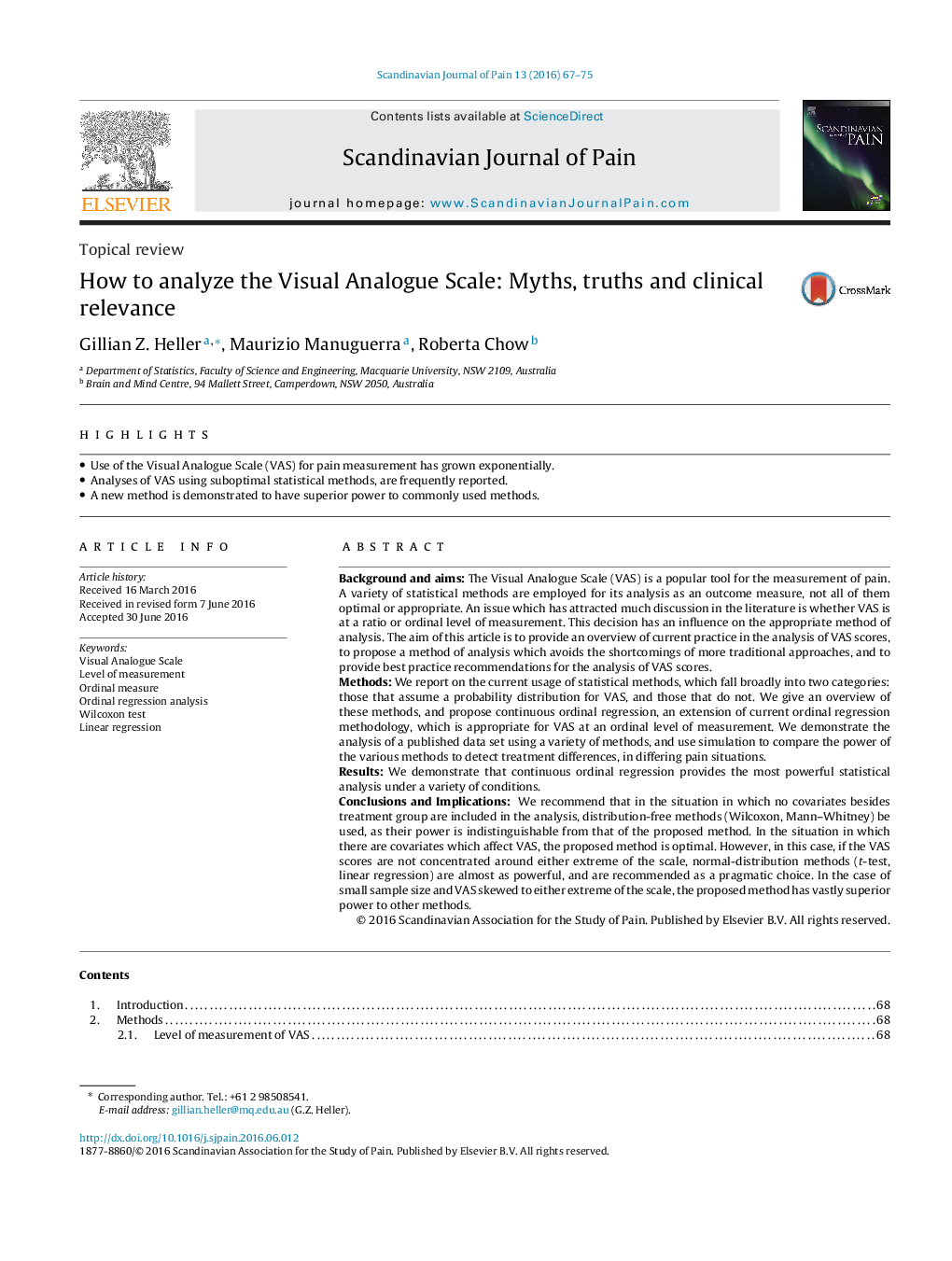| کد مقاله | کد نشریه | سال انتشار | مقاله انگلیسی | نسخه تمام متن |
|---|---|---|---|---|
| 2770663 | 1567807 | 2016 | 9 صفحه PDF | دانلود رایگان |
• Use of the Visual Analogue Scale (VAS) for pain measurement has grown exponentially.
• Analyses of VAS using suboptimal statistical methods, are frequently reported.
• A new method is demonstrated to have superior power to commonly used methods.
Background and aimsThe Visual Analogue Scale (VAS) is a popular tool for the measurement of pain. A variety of statistical methods are employed for its analysis as an outcome measure, not all of them optimal or appropriate. An issue which has attracted much discussion in the literature is whether VAS is at a ratio or ordinal level of measurement. This decision has an influence on the appropriate method of analysis. The aim of this article is to provide an overview of current practice in the analysis of VAS scores, to propose a method of analysis which avoids the shortcomings of more traditional approaches, and to provide best practice recommendations for the analysis of VAS scores.MethodsWe report on the current usage of statistical methods, which fall broadly into two categories: those that assume a probability distribution for VAS, and those that do not. We give an overview of these methods, and propose continuous ordinal regression, an extension of current ordinal regression methodology, which is appropriate for VAS at an ordinal level of measurement. We demonstrate the analysis of a published data set using a variety of methods, and use simulation to compare the power of the various methods to detect treatment differences, in differing pain situations.ResultsWe demonstrate that continuous ordinal regression provides the most powerful statistical analysis under a variety of conditions.Conclusions and ImplicationsWe recommend that in the situation in which no covariates besides treatment group are included in the analysis, distribution-free methods (Wilcoxon, Mann–Whitney) be used, as their power is indistinguishable from that of the proposed method. In the situation in which there are covariates which affect VAS, the proposed method is optimal. However, in this case, if the VAS scores are not concentrated around either extreme of the scale, normal-distribution methods (t-test, linear regression) are almost as powerful, and are recommended as a pragmatic choice. In the case of small sample size and VAS skewed to either extreme of the scale, the proposed method has vastly superior power to other methods.
Journal: Scandinavian Journal of Pain - Volume 13, October 2016, Pages 67–75
